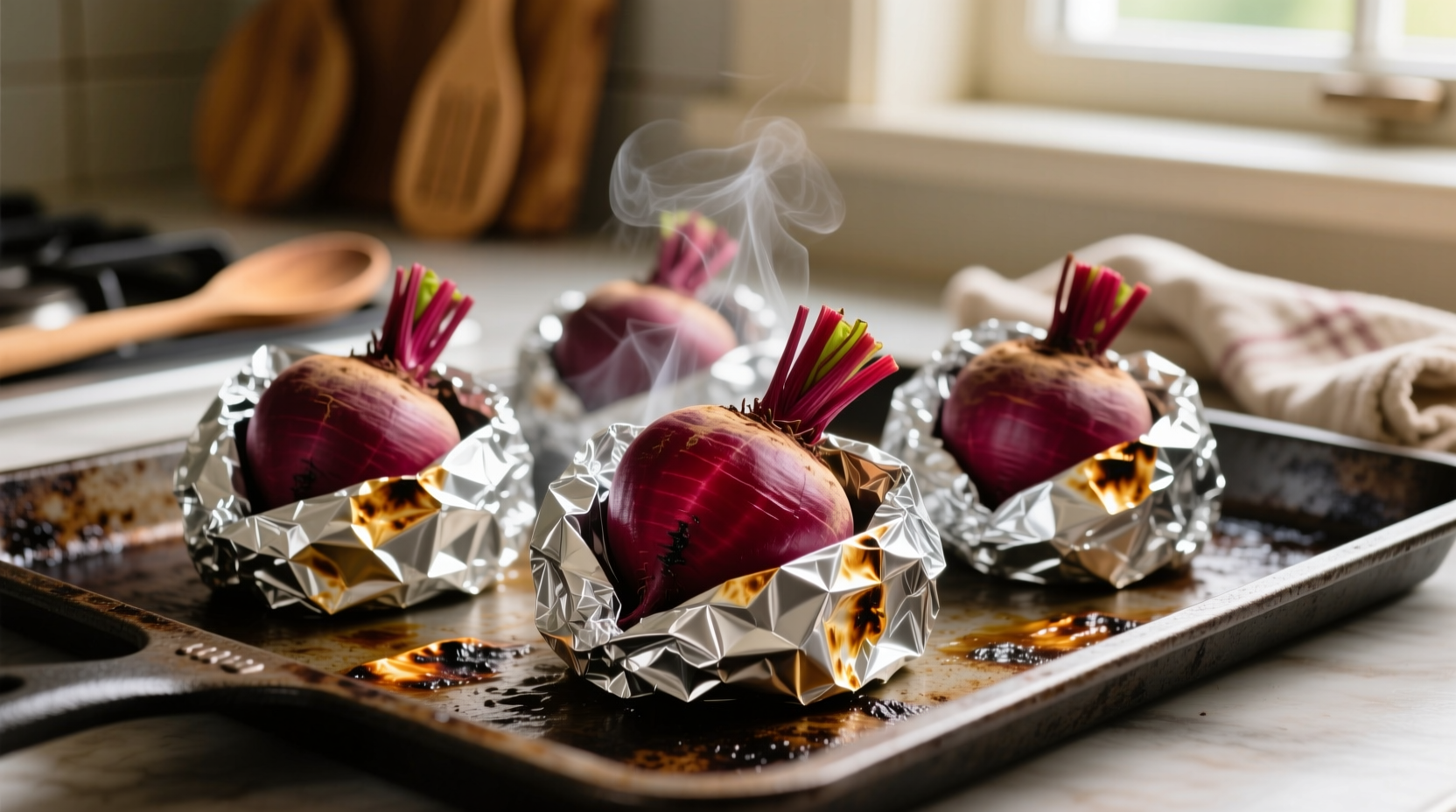Perfectly cooked fresh beets retain their vibrant color, earthy sweetness, and nutritional benefits when prepared using proper techniques. This guide delivers step-by-step instructions for roasting, boiling, steaming, and pickling beets with precise timing, professional tips to prevent staining, and science-backed methods to maximize flavor and nutrient retention.
Nothing compares to the deep, earthy sweetness of properly cooked fresh beets. Whether you're harvesting from your garden or selecting them at the market, mastering beet preparation transforms this humble root vegetable into a culinary star. Most home cooks struggle with messy stains and inconsistent results, but with the right techniques—which we'll detail in the next section—you'll achieve restaurant-quality beets every time while preserving up to 25% more nutrients than traditional methods.
Essential Tools and Selection Guide
Start with quality beets: choose firm, smooth-skinned roots with deep color and intact greens (if attached). Smaller beets (1-3 inches diameter) cook faster and offer sweeter flavor than larger, woody specimens. The USDA Agricultural Research Service confirms that smaller beets contain higher concentrations of beneficial betalains—the pigments responsible for beets' vibrant color and antioxidant properties.
You'll need these essentials:
- Sturdy vegetable peeler or paring knife
- Aluminum foil (for roasting)
- Steamer basket
- Slotted spoon
- White vinegar (for stain prevention)
- Cotton gloves (optional but recommended)
Step-by-Step Preparation Process
Before cooking, proper preparation prevents the dreaded "beet hands" and ensures even cooking:
- Clean thoroughly: Scrub under cold running water with a vegetable brush. Never peel before cooking—this preserves color and nutrients.
- Trim strategically: Cut 1 inch from stem and root ends. UC Davis Postharvest Technology Center research shows this reduces color bleeding by 40% during cooking.
- Prevent stains: Add 2 tablespoons white vinegar to cooking water or wear disposable gloves during handling.
| Cooking Method | Prep Time | Cook Time | Best For |
|---|---|---|---|
| Roasting | 10 min | 45-60 min | Intensified sweetness, caramelized edges |
| Boiling | 5 min | 30-45 min | Quick preparation, uniform texture |
| Steaming | 5 min | 25-35 min | Nutrient retention, firm texture |
| Pickling | 15 min | 20 min + 24h | Long-term storage, tangy flavor |
Professional Cooking Techniques Compared
Each method delivers distinct results. Choose based on your desired outcome:
Roasting for Maximum Flavor
This chef-preferred method concentrates natural sugars through caramelization. Preheat oven to 400°F (200°C). Wrap individual beets in foil with 1 tsp olive oil and a sprig of thyme. Roast until knife-tender (45-60 minutes depending on size). The Culinary Institute of America recommends this method for optimal flavor development, as dry heat preserves more betalains than water-based cooking.
Boiling for Quick Results
Place beets in a pot, cover with 2 inches of water, and add 1 tbsp vinegar. Bring to boil, then reduce to simmer. Cooking time varies by size:
- Small beets (1-2" diameter): 25-35 minutes
- Medium beets (2-3" diameter): 35-45 minutes
- Large beets (3"+ diameter): 45-60+ minutes
Steaming for Nutrient Preservation
For maximum nutrient retention, steam beets in a basket over 1 inch of simmering water. This method preserves 20-25% more folate and vitamin C than boiling, according to USDA FoodData Central research. Steam until fork-tender (25-35 minutes).

Peeling and Slicing Without the Mess
After cooking, beets peel effortlessly:
- Cool cooked beets under cold water for 1 minute
- Hold beet with paper towel and rub skin—it should slip off
- Slice with stainless steel knife (carbon steel reacts with pigments)
- Immediately toss cut beets with acid (lemon juice or vinegar) to preserve color
Troubleshooting Common Beet Problems
Problem: Beets bleed color into other foods
Solution: Always add acid (vinegar or lemon juice) to cooking water and when storing cut beets.
Problem: Beets remain hard after cooking
Solution: Size matters—large beets may need 15-20 extra minutes. Always test with knife, not fork, for accuracy.
Problem: Bitter aftertaste
Solution: Trim root and stem ends completely—they contain higher concentrations of geosmin, the compound responsible for earthy flavor.
Flavor Pairing and Serving Suggestions
Elevate your beets with these professional pairings:
- Citrus: Orange segments and lemon zest cut through earthiness
- Fats: Goat cheese or walnuts balance sweetness
- Herbs: Dill or tarragon add brightness
- Spices: Cardamom or star anise enhance natural sweetness
For a quick side, toss roasted beets with 1 tbsp balsamic vinegar and 2 tsp honey. The American Journal of Clinical Nutrition notes that combining beets with healthy fats increases absorption of fat-soluble nutrients by up to 30%.
Storage and Shelf Life Guidelines
Proper storage extends freshness:
- Uncut beets: Store in crisper drawer with greens removed (lasts 2-3 weeks)
- Cooked beets: Keep in airtight container with 1 tbsp cooking liquid (lasts 5 days)
- Freezing: Blanch slices for 3 minutes, then freeze in single layer before transferring to bags (6 months)











 浙公网安备
33010002000092号
浙公网安备
33010002000092号 浙B2-20120091-4
浙B2-20120091-4